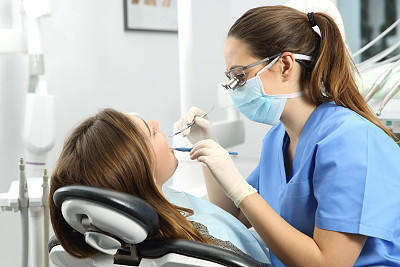The Essential Guide to Effectively Extracting a Tooth and Ensuring a Smooth Recovery Process
Summary: Extracting a tooth is a significant dental procedure that requires careful planning and execution. This guide offers essential insights into the preparation, the extraction process, and post-procedure care, ensuring not only a successful extraction but also a smooth recovery. By understanding each aspect, patients can minimize discomfort and enhance their healing experience. This article serves as a comprehensive resource for anyone facing a tooth extraction, providing practical tips and advice from pre-procedure considerations to essential recovery strategies.
1. Preparing for Tooth Extraction

Preparation is crucial when it comes to tooth extraction. First and foremost, a thorough consultation with your dentist is necessary. This involves a detailed discussion about your medical history, dental issues, and any medications you may be taking that could affect the procedure. Understanding your dental needs allows the dentist to tailor the extraction approach specifically for you.
Another key aspect of preparation is the need for imaging studies. X-rays or 3D scans can offer a detailed view of the tooth’s position and the surrounding bone structure. This information is vital for the dentist to plan the safest and most effective extraction technique.
Lastly, fasting might be necessary if you’re undergoing sedation during the procedure. Your dentist will provide specific instructions about when to stop eating or drinking beforehand to ensure safety and comfort during the extraction.
2. The Extraction Process Explained
The extraction process typically starts with administering anesthesia. Local anesthesia is most common, numb the area around the tooth to minimize pain during the procedure. For patients with anxiety or complex extractions, general anesthesia may be recommended.
During the extraction, the dentist will use specialized tools to loosen the tooth from its socket. Depending on the tooths condition—whether it’s completely erupted, partially erupted, or impacted—the technique may vary. If the tooth is impacted, the dentist may need to remove some surrounding bone or gum tissue to access it effectively.
Once the tooth is extracted, the dentist will clean the site and may place stitches if necessary. Post-extraction care instructions are then provided, which are crucial for a successful recovery.
3. Immediate Post-Extraction Care
After the extraction, managing the initial recovery is vital. The dentist will usually recommend biting on gauze for about 30 to 45 minutes to control bleeding. It is essential to avoid vigorous rinsing or spitting, which can disturb the blood clot that forms in the socket.
Pain management is another critical aspect immediately following the procedure. Over-the-counter pain relievers or medications prescribed by your dentist can help ease discomfort. It’s essential to follow the dosage instructions carefully to avoid complications.
Ice packs can also be beneficial. Applying ice to the outside of your cheek for 15-minute intervals can reduce swelling and help numb the area, making it more comfortable during the early stages of recovery.
4. Long-Term Recovery and Care Tips
As you embark on the journey of recovery, maintaining proper oral hygiene is crucial but should be done carefully. Its recommended to wait 24 hours before brushing the extraction site gently. After this period, continuing to brush and floss regularly while avoiding the extraction area can prevent infection.
Dietary choices play a significant role in recovery. Stick to softer foods for the first few days, gradually reintroducing solid foods as comfort levels allow. Foods like yogurt, applesauce, and mashed potatoes can provide nutrition without irritating the extraction site.
Finally, be attentive to any signs of complications, such as prolonged bleeding or increased pain. If these occur, don’t hesitate to contact your dentist immediately for advice or further examination.
Summary:
In conclusion, effective tooth extraction involves careful preparation, a precise extraction process, and attentive post-extraction care. Understanding these phases can significantly enhance your overall experience, ensuring a smoother recovery. By adhering to the guidance provided, patients can mitigate discomfort and promote healing, allowing them to return to their routine with confidence.
This article is compiled by Vickong Dental and the content is for reference only.



